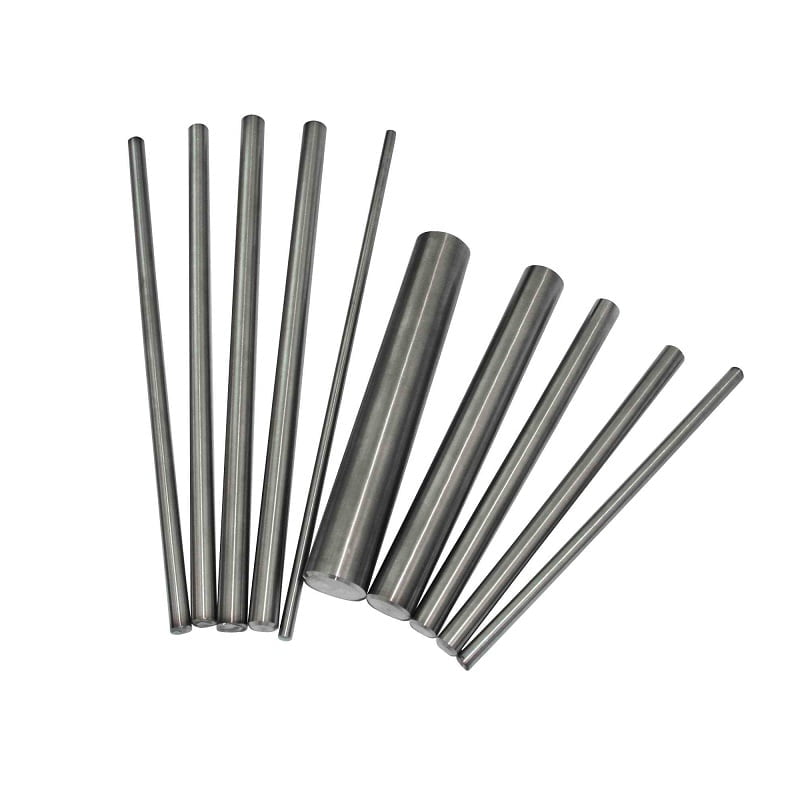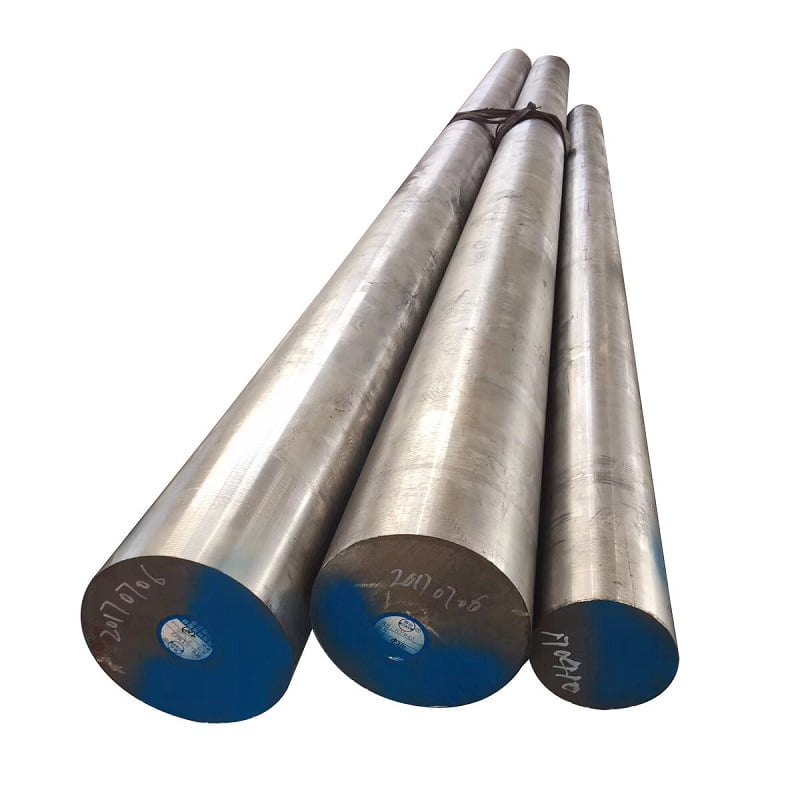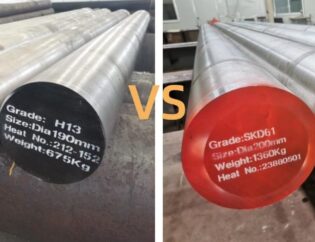
철강 등급은 다양한 엔지니어링 및 제조 응용 프로그램에 필수적이며 각 유형은 특정 용도에 적합한 고유 한 특성을 제공합니다. 이 비교는 12L14 및 4140 강철을 탐색하여 조성, 기계적 특성, 응용, 열 처리 능력, 용접 성 및 비용의 차이를 강조합니다.
12L14 스틸 개요
12L14는 우수한 가공성으로 유명한 저탄소 강철입니다. 정밀 가공이 고품질 부품을 생산하는 데 중요한 산업에서 일반적으로 사용됩니다.
12L14 스틸의 화학적 조성
12L14의 화학적 조성은 가공 가능성과 전반적인 성능에 필수적입니다. 일반적인 구성은 다음과 같습니다.
| 요소 | 구성 (%) |
|---|---|
| 탄소(C) | ~ 0.12% |
| 망간(Mn) | ~ 0.60% |
| 인(P) | ~ 0.04% |
| 유황(S) | ~ 0.26% |
| 납(Pb) | ~ 0.15% |
가공성을 향상시키기 위해 리드가 추가 되어이 강철 등급이 특히 정밀 가공 애플리케이션에 사용자 친화적입니다.
12L14 강의 기계적 특성
12L14의 기계적 특성은 응용 분야에서 중요한 역할을합니다. 주요 속성은 다음과 같습니다.
| 재산 | 값 |
|---|---|
| 인장 강도 | 58,000 - 75,000 psi |
| 항복 강도 | 약 38,000 psi |
| 경도 | 약 85 HRB |
| 가공성 | 훌륭한 |
| 연성 | 낮거나 중간 정도의 스트레스 응용에 적합합니다 |
12L14 스틸의 응용
뛰어난 가공성으로 인해 12L14는 일반적으로 정밀 가공이 필요한 응용 분야에서 사용됩니다. 일반적인 용도는 다음과 같습니다.
| 응용 프로그램 유형 | 설명 |
|---|---|
| 정밀 가공 부품 | 피팅 및 밸브 본체와 같은 타이트한 공차가 필요한 구성 요소. |
| 패스너 | 가공 용이성으로 인해 나사와 볼트에 적합합니다. |
| 기어 | 다양한 기계의 하위로드 기어에 사용됩니다. |
| 유압 부품 | 일관된 치수를 가진 유압 피팅 및 구성 요소에 이상적입니다. |

4140 강철 개요
4140 강철은 강도, 경도 및 탁월한 내마모성으로 알려진 중간 탄소 합금강입니다. 내구성과 인성이 필요한 고 스트레스 애플리케이션에서 자주 사용됩니다.
4140 스틸의 화학적 조성
4140의 화학적 조성은 향상된 강도와 저항을 제공하도록 설계되었습니다. 일반적인 구성에는 다음이 포함됩니다.
| 요소 | 구성 (%) |
|---|---|
| 탄소(C) | 0.38 - 0.43% |
| 망간(Mn) | 0.60 - 0.90% |
| 크롬(Cr) | 0.80 - 1.10% |
| 몰리브덴(Mo) | 0.15 - 0.25% |
| 인(P) | ≤0.04% |
| 유황(S) | ≤0.05% |
크롬 및 몰리브덴과 같은 추가 합금 요소는 강철의 경화성과 내마모성을 향상시킵니다.
4140 스틸의 기계적 특성
4140 강철은 뛰어난 기계적 특성을 나타내며 고성능 응용 분야에 잘 적용됩니다. 주요 속성은 다음과 같습니다.
| 재산 | 값 |
|---|---|
| 인장 강도 | 90,000 - 100,000 psi |
| 항복 강도 | 약 60,000 psi |
| 경도 | 최대 50 시간 (열처리) |
| 가공성 | 보통의 |
| 연성 | 특히 어닐링 된 상태에서 좋습니다 |
4140 스틸의 응용
강도와 강인성으로 인해 4140 스틸은 고성능과 내구성을 요구하는 응용 분야에서 널리 사용됩니다. 일반적인 용도는 다음과 같습니다.
| 응용 프로그램 유형 | 설명 |
|---|---|
| 샤프트 | 마모 및 변형에 대한 저항이 필요한 전력 전송 성분에 사용됩니다. |
| 기어 | 고재 기어 응용 분야에 적합하며 종종 추가 강도를 위해 열처리됩니다. |
| 크랭크 샤프트 | 강인성과 피로 저항으로 인해 자동차 응용 분야에서 일반적으로 사용됩니다. |
| 무거운 의무 패스너 | 높은 인장 강도와 내구성이 필요한 응용에 이상적입니다. |
가공성
가공성은 가공 공정 중에 재료를 얼마나 쉽게 절단하고 형성 할 수 있는지를 말해서 생산 효율에 크게 영향을 미칩니다.
| 특징 | 12L14 강철 | 4140 스틸 |
|---|---|---|
| 가공의 용이성 | 훌륭한; 리드 컨텐츠는 절단을 향상시키고 공구 마모를 줄입니다. | 보통의; 정확한 가공 기술이 필요하며 공구 마모가 증가 할 수 있습니다. |
12L14에서 가공의 용이성은 소형 부품의 대량 생산에 종종 선호되는 반면, 4140은 더 많은 관리 및 특수 도구가 필요할 수 있음을 의미합니다.
열 처리 능력
열처리는 강도와 경도를 요구하는 응용 분야에서 강철의 특성을 향상시키는 데 중요한 역할을합니다.
| 특징 | 12L14 강철 | 4140 스틸 |
|---|---|---|
| 열처리 | 일반적으로 열처리되지 않습니다. 가공 가능성을 유지하기 위해 rolled 조건으로 사용됩니다. | 열처리가 매우 높아 경도와 강도를 크게 향상시키기 위해 담금질 및 템퍼링과 같은 프로세스가 가능합니다. |
4140의 열처리 능력은 높은 강도와 내마모성이 중요한 응용 분야에서 탁월합니다.
용접성
용접 성은 제조 중에 다른 강철 등급을 쉽게 용접 할 수있는 필수 특성입니다.
| 특징 | 12L14 강철 | 4140 스틸 |
|---|---|---|
| 용접특성 | 리드로 인한 용접에 권장되지 않으므로 용접 무결성을 손상시킬 수 있습니다. | 균열을 최소화하기 위해 예열이 필요한 경우가 많지만 용접 될 수 있습니다. 적절한 용접 기술과 필러를 사용해야합니다. |
12L14의 용접 성이 부족하면 용접이 필요한 특정 설계 시나리오에서 응용 프로그램을 제한 할 수 있으며 4140은 제작에 더 많은 다양성을 제공합니다.
비용 및 가용성
비용과 가용성은 제조 공정에서 철강 선택에 영향을 미치는 중요한 요소가 될 수 있습니다.
| 특징 | 12L14 강철 | 4140 스틸 |
|---|---|---|
| 비용 | 가공 가능성으로 인해 저축이 발생할 수 있지만, 납 및 합금 요소로 인해 일반적으로 더 비쌉니다. | 일반적으로 12L14보다 저렴합니다. 다양한 형태로 제공되며 다양성으로 인해 시장이 넓은 경향이 있습니다. |
다양한 크기와 모양의 4140의 가용성은 다양한 엔지니어링 애플리케이션에 매력적인 선택입니다.
요약 및 결론
12L14와 4140 강철을 비교하면 각각의 별개의 응용에 적합한 상당한 차이가 나타납니다.
| 특징 | 12L14 강철 | 4140 스틸 |
|---|---|---|
| 기본 속성 | 우수한 가공성, 저탄소 | 고강도, 열처리 가능한 중간 탄소 합금 |
| 화학적 구성 요소 | 저탄소; 리드는 가공성을 향상시킵니다 | 중간 탄소; 크롬과 몰리브덴은 강도를 향상시킵니다 |
| 기계적 성질 | 중간 정도의 인장 및 항복 강도 | 높은 인장 강도와 경도 |
| 애플리케이션 | 정밀 부품, 패스너, 유압 부품 | 샤프트, 기어, 자동차 부품 |
| 가공성 | 리드 컨텐츠로 인해 우수합니다 | 보통, 정밀 기술이 필요합니다 |
| 열처리 | 일반적으로 열처리되지 않습니다 | 개선 된 특성을 위해 열처리 될 수 있습니다 |
| 용접성 | 용접에 적합하지 않습니다 | 적절한 기술로 용접 할 수 있습니다 |
| 비용 및 가용성 | 더 높은 비용, 특수 가공 재료 | 더 경제적이며 널리 사용 가능합니다 |
결론적으로, 12L14와 4140 스틸 사이의 선택은 정밀 가공 또는 고강도가 우선 순위인지와 같은 특정 프로젝트 요구 사항에 따라 다릅니다. 각 강철 등급에는 장점과 제한 사항이있어 엔지니어와 제조업체가 적절한 자재를 선택하기 전에 요구를 평가하는 것이 필수적입니다. 추가 질문이 있거나 추가 정보가 필요한 경우 언제든지 문의하십시오!

